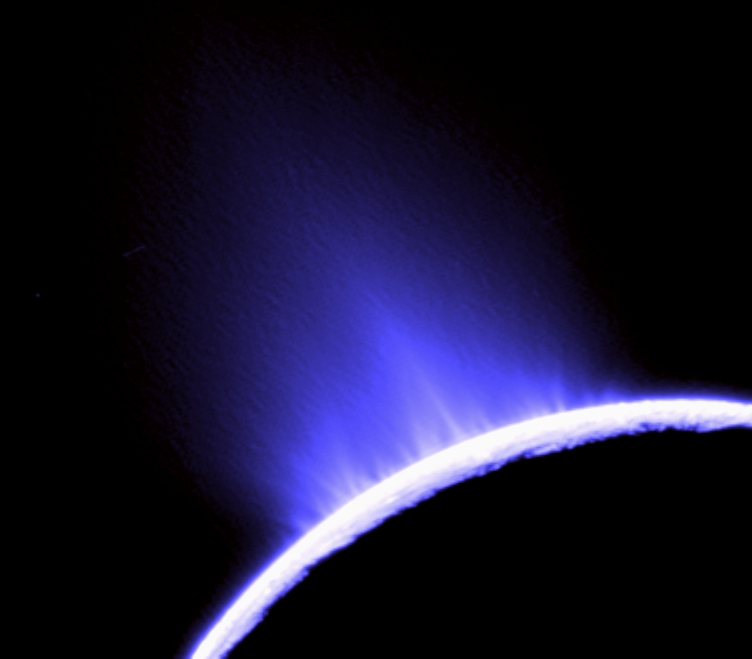The Sea on Saturn’s Moon
April 4, 2014
The discovery of a plume of water vapor shooting from the surface of Enceladus in 2005 provided the first clue that this tiny moon of Saturn might hold liquid water. Now, radar surveys of Enceladus have revealed strong evidence of a subterranean sea with at least as much water as Lake Superior, the largest body of fresh water on Earth. The sea, which is buried beneath about 20 miles (32 kilometers) of surface ice, is centered on the moon’s south pole. But it may actually extend much farther, perhaps across the entire moon. Lined by a rocky floor, the sea may be as much as 5 miles (8 kilometers) deep.
The radar surveys that detected the sea were conducted by scientists working with the Cassini space probe, which has been in orbit around Saturn since 2004. Cassini has flown close to Enceladus several times. Each pass has allowed scientists to use the gravitational pull of the moon on the probe to help map the moon’s internal structure.

Geysers of water vapor and ice erupt from Saurn's moon Enceladus. (Cassini Imaging Team, SSI, JPL, ESA, NASA)
The discovery of the sea puts Enceladus in a select group of extraterrestrial bodies in the solar system that likely hold liquid water. These include Mars and Jupiter’s moons Callisto, Europa, and Ganymede. Since 2005, Cassini scientists have confirmed that the water vapor from Enceladus’s plumes contains carbon and nitrogen, two essential chemical elements for life as we know it. Could there be life there? Planetary scientist Jonathan Lunine, a member of the study team, said the presence of the sea makes Enceladus “a very attractive potential place to look for life.” In recent years, Enceladus and Europa had become space scientists’ favorite destinations for space missions seeking signs of extraterrestrial life in the solar system. However, due to funding limitations at NASA, only one mission has been approved–to Europa. This new evidence may help get a mission to Enceladus back on the drawing board.
Additional World Book articles:
- Cassini, Giovanni Domenico
- Satellite
- Space exploration
- Close Encounters with Saturn (a Special Report)
- Probing the Planets (a Special Report)


